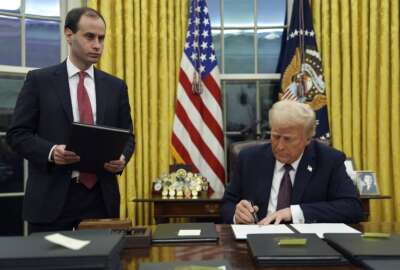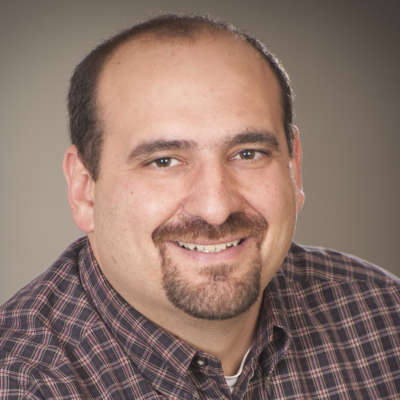
FedInsights by SAP
Agency modernization must be more about business process change than IT
Laura Grant and David Vernon, both of SAP, say agencies need to adopt innovation platforms, not just new technology.
Laura Grant and David Vernon, both of SAP, say agencies need to adopt innovation platforms, not just new technology.
White House special assistant to the President Matt Lira recently was asked at a conference what are your top priorities. Lira, whose main job is working in the Office of American Innovation, said simply technology and fixing their underlying processes. But then he expounded a little further, saying “We need to improve citizen facing experiences and if do not fix those underlying processes, then we are just putting a Band-Aid on a wound.”
It’s an interesting response for several reasons.
First, the White House’s draft IT modernization strategy has a strong cyber flavor and includes no mention of citizen services.
OAI and OMB are now reviewing more than 90 comments so it could be a few more months until what changes especially around citizen services, come in the final strategy.
In the meantime, agencies continue to go down a well-worn path to move off legacy technology and on to modern platforms. Agencies are expected to spend more than $2 billion on cloud computing this year and that figure is only expected to continue to rise in the coming years. The departments of Commerce, Homeland Security and Treasury are the top three civilian agencies who are buying cloud services, according to the State of Federal IT report from the CIO Council.
There still is plenty of opportunity around cloud too. OMB set a governmentwide goal of 15 percent of all agency systems to be in the cloud and no agency has reached that mark yet.
But it’s more than just moving to the cloud. It’s relooking at the business processes behind these mission areas, and how they can be optimized to serve the customer better.
That’s where data analytics, a strong eye toward mobility and the use of agile or dev/ops all play huge roles.
So how can agencies bring all of these initiatives together?
Laura Grant, the head of Digital Innovation for the Public Sector at SAP, said agencies have a true opportunity to reinvent themselves by rethinking how they meet their mission.
“How do you take a business process that is maybe 10 steps today and get that down to two steps? Agencies are really expected to do more with less. So this is a great opportunity for them to rethink those business processes, make them more efficient, automate those, and once they are able to do that, then they also should be able to think about whether this modernization effort is an innovation platform that they can continue to modernize with down the road,” Grant said in the Carahsoft Innovation in Government show. “Technology is changing so rapidly, you have to think about those technologies that will let you bring in new functionality down the road, and new innovations that you can’t even imagine today.”
Some of those emerging technologies that could impact federal business practices include machine learning, artificial intelligence, blockchain and chat bots or digital assistants.
“We have digital systems at home, why not have those in the enterprise? Why not talk to your financial system or your supply chain system or your human resources system, these chat bots leveraging machine learning will become smart assistants. As you ask questions of your chat bot over time, the intelligence will step in will start telling you information that you may want to know and act upon,” she said. “That is really what should be considered as part of this modernization effort.”
David Vernon, senior human capital management application specialist at SAP, said some of these technologies already are impacting the human resources community.
“We are seeing a big push to the social networking and more communications going on between employees and management staff to get them more engaged and more productive,” he said.
Grant said some organizations can use machine learning to remove bias in recruiting and resume matching, which traditionally have been two manual processes.
Vernon said the technologies are opening the door to a future that includes a chat bot giving the HR director a real-time headcount as well as other data so they can plan accordingly.
Grant said agencies are interested in the art of the possible and asking a lot of questions about how the technology could work.
“This is allowing us to change the conversation around the business processes. When you are using a technology like blockchain, you are exploring the existing process and how blockchain could change some of that,” she said. “Same thing with machine learning where it’s creeping into our personal lives and you will see the same thing happen with enterprise systems where it’s just going to be embedded in these technologies and all of a sudden you will not realize that there is machine learning behind the scenes really making your job easier.”
While these technologies continue to mature, agencies can take advantage of advancements in cloud computing and other more proven technologies to address business process improvements.
“There seems to be a lot of interest in cloud-based human capital management, especially if it’s configurable, easy to use and mobile,” Vernon said. “Everyone is interested in mobile, but they aren’t sure how they will use it yet because federal agencies are different in how they handle mobile.”
Vernon said many agencies are dealing with current human resources systems that are 20 or 30 years old and can’t easily take advantage of mobile capabilities.
“We have five generations in the workforce now, for the first time ever, and they all work differently. Millennials want to be able to go to their cell phones and enter transactions or access data without having to be in the office,” he said. I think employees are pushing agencies a little bit to modernize.”
About SAP
 SAP can help your organization develop forward-thinking, citizen-centric programs and improve government performance, services, and accountability through cloud computing, enterprise mobility, and analytics.
SAP can help your organization develop forward-thinking, citizen-centric programs and improve government performance, services, and accountability through cloud computing, enterprise mobility, and analytics.
Resource Center
Host
 Jason Miller
Jason Miller
Jason Miller is a reporter whose work focuses mainly on technology and procurement issues, including cybersecurity, e-government and acquisition policies and programs.
Guests
 Laura Grant, Head of Digital Innovation, SAP Regulated Industries
Laura Grant, Head of Digital Innovation, SAP Regulated Industries
Laura has over 15 years advising public sector customers on business intelligence, analytics and Enterprise Resource Planning. She is a creative innovator, passionate about design thinking for strategic decision making and transformation with innovative technologies. Laura founded and runs the SAP innovation lab in DC. She is also very passionate about STEM, mentoring young talent and building future women leaders.
 David Vernon, Senior Human Capital Management Specialist
David Vernon, Senior Human Capital Management Specialist
David brings over 40 years of experience working within the Human Capital Management market space for the Federal Government, State and Local Governments, Department of Defense and private industry. David has an MBA in Human Resources Management. David’s primary role at SAP is a HCM product specialist within Public Sector focusing on core HR, recruiting, learning, performance, succession, compensation, collaboration, and workforce analytics.
Copyright © 2025 Federal News Network. All rights reserved. This website is not intended for users located within the European Economic Area.
Related Stories





